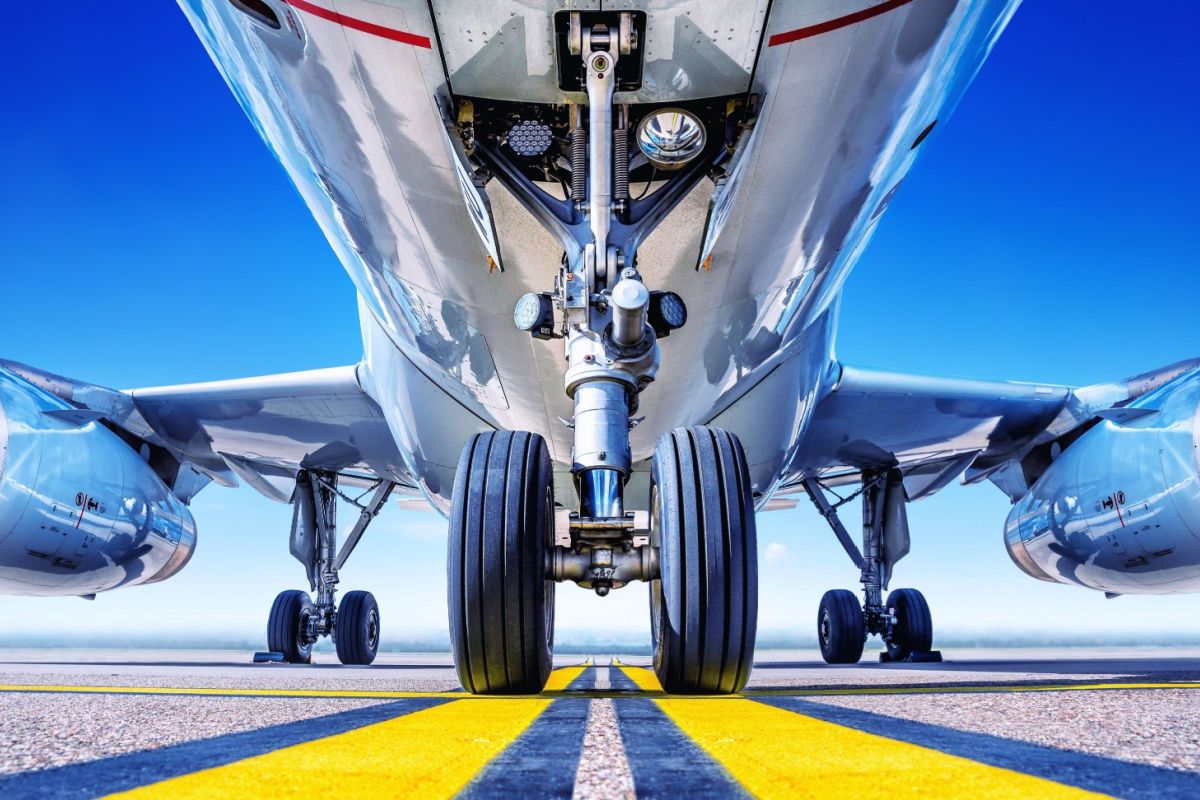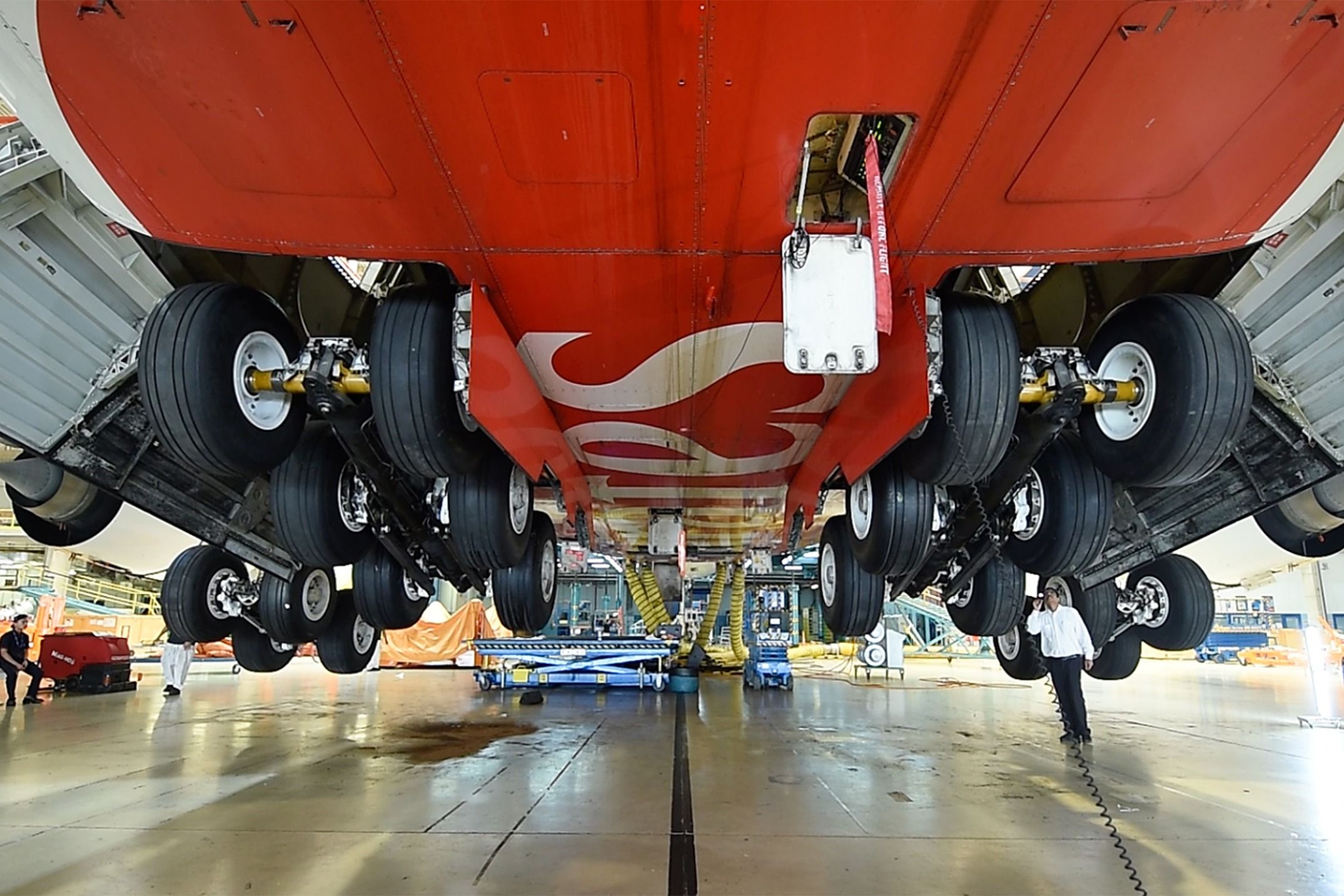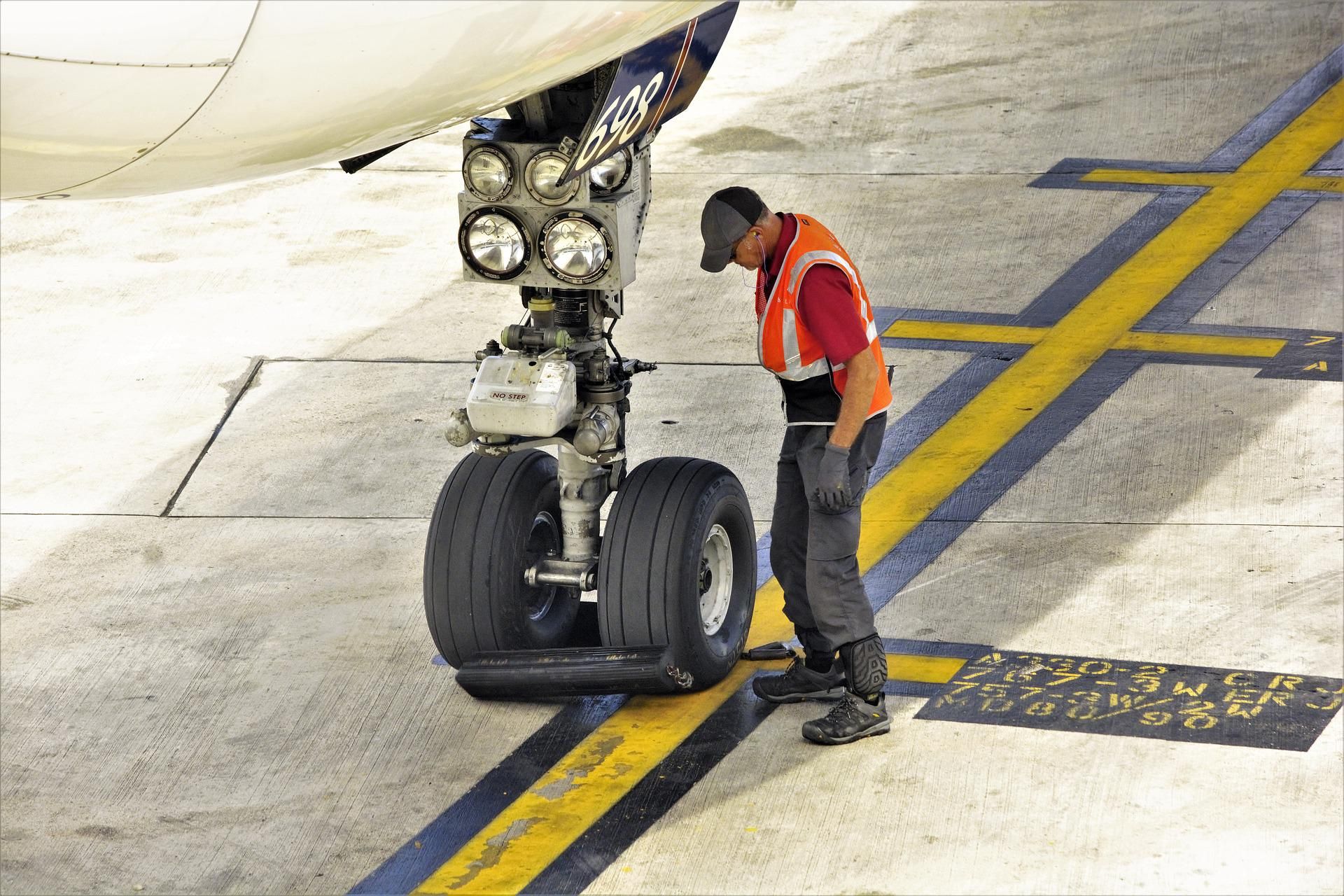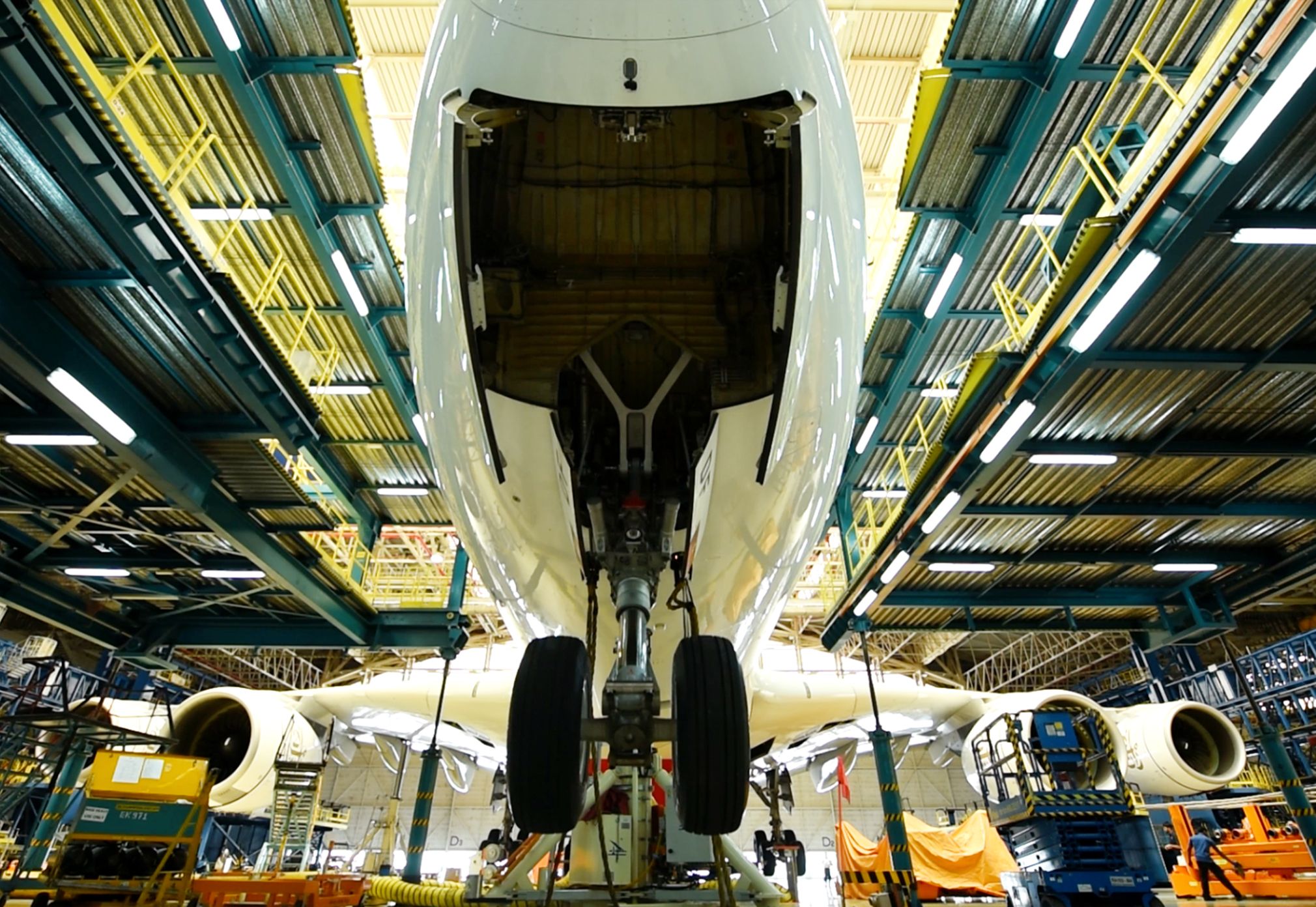Summary
- Commercial aircraft use hydraulic retractable landing gear systems, with sequenced valves and down-locks to raise and lower the gear.
- The forward retracting design helps the gear overcome air resistance during takeoff and prevents excessive stress during high-speed lowering.
- The forward retraction design acts as a fail-safe system during hydraulic malfunctions, allowing gravity extension and minimizing the risk of collapse.
Modern commercial aircraft are equipped with hydraulic retractable landing gears. The retraction system utilizes pressurized hydraulic fluid to actuate various linkages to raise and lower the gear. When the pilot commands the landing gear in the “up” position, hydraulic fluid is directed into the gear line.
The fluid flows through sequenced valves and down-locks to the gear-actuating cylinders. The system incorporates a hydraulic reservoir to contain excess fluid and features electrical gauges to determine the system fluid level. Each gear has two limit switches installed, one dedicated to extension and one to retraction.
Have you noticed that on most aircraft (commercial or military), the nose gear retracts forward while the main landing gear retracts rearwards? Have you ever wondered why that is the case?
On most commercial aircraft, the main landing gear is retracted rearwards or sideways while the nose gear is retracted forward into the fuselage. The nose gear is much smaller and has fewer wheels than the main landing gear. Unlike the main gear, there is usually no braking mechanism in the nose gear. That means the gear structure and system are much lighter. It is prone to stronger vibrations due to the aerodynamic drag incurred during flight.
The forward retracting design
1. The weight of the nose gear
- The nose gear weighs less than the rear landing gear.
- Nose gear wheels are generally fewer.
- The nose gear is generally smaller.
- May fail to retract backward (due to the exposure to the wind).
- The wind does not create resistance but instead aids in lowering the landing gear and locking it in place.

Related
How Does Aircraft Landing Gear Work?
Covering the various processes involved.
2. A failsafe design method
- The nose landing gear does not rely on hydraulic pressure.
- Hydraulic systems can fail during flight.
- Even if the hydraulic pressure is lost, the nose landing gear can be lowered.
- The deployment will be aided by gravity.
- Pilots can also manually lower the gear, with the wind essentially forcing it down even if it is stuck.
As highlighted by One Monroe Aerospace, when the aircraft takes off, the forward retracting design forces the gear to overcome the air resistance. This is easier since the air cart is at relatively lower speeds. When lowering the gear at a higher speed, the aerodynamic force assists the downward movement, preventing the gear from experiencing excessive stress. A rear-retracting design may be more advantageous during stowing. However, inward forces would impose significant stress on the gear during extension.
The structural members are designed to carry the load of the nose gear assembly away from the forward door. The forward retracting design acts as a fail-safe system as part of the safety mechanism on commercial airliners. In the event of an in-flight hydraulic malfunction (or failure) of the nose gear system, the gear is more likely to be extended downwards in the flow direction.
Photo: Emirates
On most airliners, the nose door can be opened manually during a hydraulic malfunction, allowing the gear to experience gravity extension. The oncoming aerodynamic force aids in putting the gear in place. The gravity-pull in a rearward design could be prevented by the drag the aircraft experiences during flight.

Related
Landing Gear: 5 Things You Might Not Know
Did you know that the first retractable landing gear was developed in 1911?
When to retract the gear after lift-off?
- Ensuring a positive rate of climb has been achieved.
- Ensuring the gear speed does not exceed the maximum allowable limit
- Ensuring obstacles can be cleared more efficiently with the gears retracted
Touching down
Upon touchdown, the forward-retracting design bears high mechanical loads incurred on the nose gear system. The air resistance has minimal or no effect on the gear system when locked in a lowered position. The mechanical and aerodynamic loads can compromise the rear-retracting locking mechanism or result in a complete collapse of the nose gear. Notably, many military aircraft use a rear-retracting nose gear mechanism with a locking knee for added structural support.
The forward retraction design maximizes the cargo space by utilizing the space in front of the fuselage. The Russian Tupolev Tu154 and Tu134 use the rear-retracting nose gear design, which takes up much of what could be the cargo space. Notably, the rear-retracting design was inherited from older Russian airplanes that allowed the space for the glass nose seating navigator just beneath the cockpit.

Related
How Alrosa’s Tupolev Tu-154 Landed On An Abandoned Airstrip In 2010
The Tupolev Tu-154 made an emergency landing on a remote, disused runway.



